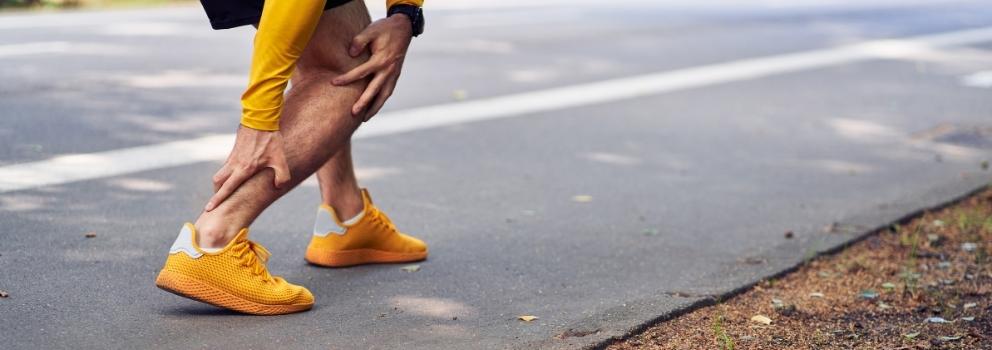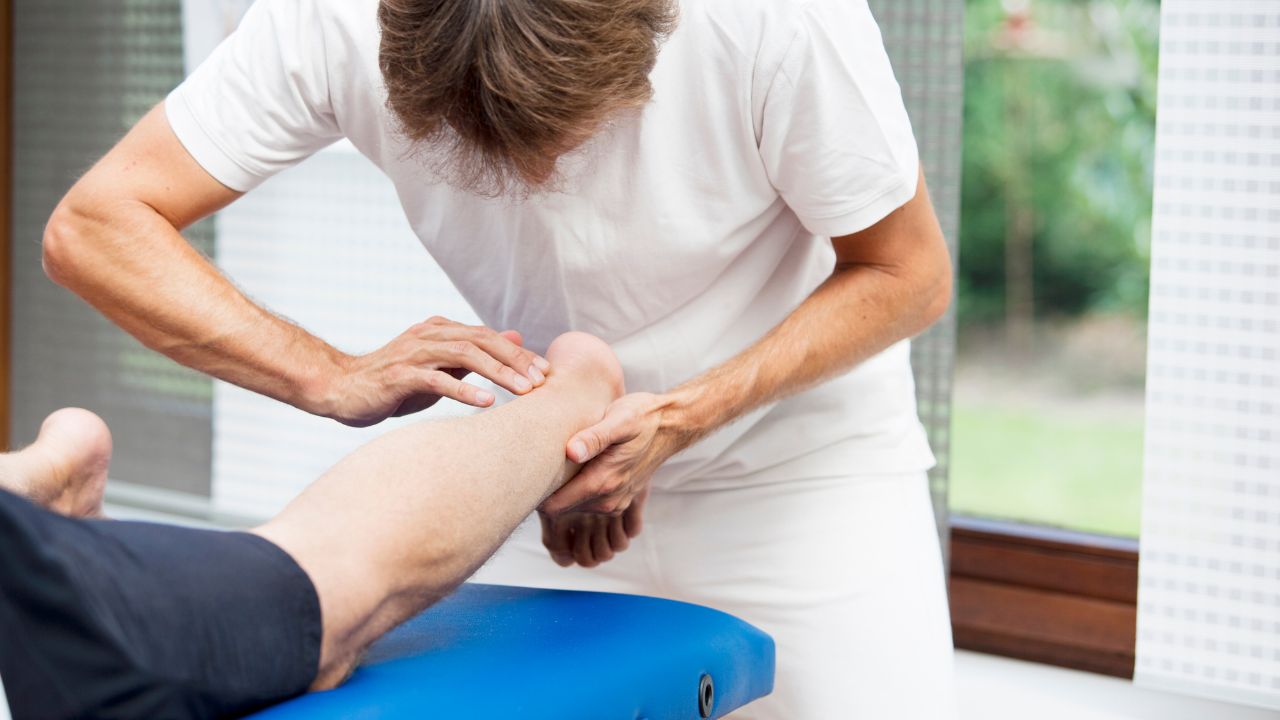CALL US NOW +1-844-669-0939

Platelet Rich Plasma for Tendonitis
Whether you’re a pro or just a very enthusiastic hobbyist, nothing can derail this year’s goal like a painful sports injury. After all, a big part of success is working through the pain – but ignoring our body’s alert signs can easily create bigger problems down the road.
Tendonitis (sometimes also known as tendinitis or tendinopathy) is a particularly common red flag. However, thanks to the latest advances in sports medicine, platelet-rich plasma for tendonitis can turn temporary discomfort into a chance for tissue regeneration and tendon healing.
What is tendonitis?
Tendonitis is the inflammation or irritation of a tendon – the thicker fibers that connect muscles to the bone below.
This condition can affect any major joint in the body, but it occurs more often in the shoulders, elbows, wrists, heels, and knees. Depending on the location, it can be also be called “Achilles tendinitis” (when it affects the tendons in your Achilles heel, between the back of your foot and the end of your calf), “shoulder epicondylitis” (or tennis elbow), or patellar tendinopathy (when it affects the knee joints and its attached hamstring muscle).
What are the causes of tendonitis?
Occasionally, tendonitis can occur due to a sharp or sudden movement. More often than not, it is a repetitive strain injury: it happens after we repeatedly perform the same type of movement, especially if we don’t follow the right form or technique.
When we move, exert ourselves, or jump, the shock to our joints can create minuscule, near-invisible micro-tears in the tendon and ligaments. As these micro-tears accumulate, they will cause inflammation and pain, and tendonitis will develop.
Who is at risk for tendonitis?

Tendonitis is a common injury among athletes. Runners and cyclists often develop tendonitis in the hips, Achilles heel or the patellar tendon (the one inside the knee). Meanwhile, those who practice sports that require throwing, such as cricket, golfing, javelin throwing, or bowling, often develop it around the shoulder, elbows, or wrist joints.
Finally, other people at risk of tendonitis include:
- Adults 40 years or older
- People taking medications like fluoroquinolone antibiotics or statins
- People with diabetes, gout, osteoarthritis or rheumatoid arthritis
- People who spend a lot of time bent over or kneeling (like when gardening, scrubbing, or woodworking).
This uncomfortable medical issue can be treated at our Beverly Hills PRP Facility using PRP technology and Platelet-rich plasma injections. PRP therapy provides relief and is an effective way to treat tendonitis.
What are the symptoms of tendonitis?

When mild or only beginning, tendonitis may simply feel like soreness or dullness around the joint. However, when it flares up, the pain can quickly intensify. This may include:
- Frequent bouts of pain that radiate from a joint towards the attached bone
- Pain that intensifies upon movement
- A joint that feels stiff or that resists movement
- Swelling, tenderness, or heat around the joint
Can tendonitis be treated?
Orthopedic knowledge is all well and good, but for patients who are canceling their plans because of joint pain, a diagnosis is only a step towards treatment. For overuse injuries, relief usually comes in the form of painkillers. Patients who want natural healing often just have Rest, Ice, Compression and Elevation to fall back on. This means kissing the day’s activities goodbye!
But is there a more definitive way of getting rid of tendonitis?
How is tendonitis usually treated?
The standard treatment new tendon injuries is usually cortisone injections. This may offer fast, but brief relief – but symptoms usually return soon after you begin exercising again.
Physical therapy and corticosteroid medication can help your tendons gain extra resistance, and stave off any subsequent attacks for a while.
Chronic tendon problems will eventually return. Every time your tendonitis flares up, the inflammation will begin to thicken the tissue around the tendon. This degeneration process will increase pain, make the joints stiff, and reduce blood flow to the area.
At this point, pain will begin to increase with each attack. Many patients end up with chronic back pain, disability, or a complete tear of a tendon or ligament. Tendon ruptures are not just immensely painful, but they also need complex surgical repairs. Musculoskeletal surgery is usually followed by prolonged bed rest and slow recovery.
Fortunately, platelet-rich plasma therapy injections can help you never get to this point, as well as speeding up the post-surgical healing process.

What is platelet-rich plasma (PRP)?
Platelet-rich plasma (PRP) is a novel way to boost the body’s ability to restore itself by injecting a large amount of platelets right in the area where they are needed.
Platelet-rich plasma is an autologous treatment, that is, it is made from each patient’s own blood samples. To develop PRP, we simply take a few blood samples (way less than for a regular blood donation). Then, we put it through a centrifuge to separate its components.
From it, we will extract the plasma (the liquid part) and the platelets, taking out leukocytes, red blood cells, and other components. The end result is a natural infusion that includes a higher concentration of platelets than whole blood usually has.
How Is PRP used to treat tendonitis?

Using a PRP injection for knee, heel, or shoulder injuries requires injecting the platelet-rich plasma as close as possible to the injury site.
Platelets are one of the smallest components of the blood. When you are injured – whether it’s a big gash or a series of micro-tears – platelets form a mesh around the injury to kickstart the clotting and healing process. They also contain a hormone known as growth factor, which increases circulating stem cells and triggers collagen production.
Remember collagen? This fibrous protein is responsible for skin elasticity, but it is also the main building block of your tendons and ligaments. In this way, a good shot of platelets close to your Achilles tendonitis or your tennis elbow will help speed up recovery.
Once strengthened, your tendons will once again provide optimal protection to your joints and the soft tissue around them.
What are the key advantages to Platelet Rich Plasma (PRP) therapy?
PRP injections are faster and more efficient than its alternatives. For you, this means the following benefits:
- You will need fewer anti-inflammatory medications or painkillers (opioids included)
- This means fewer side effects from medication, such as stomach discomfort, heartburn, or drowsiness.
- If you had surgery, PRP can shorten your post-op recovery downtime.
- The likelihood of allergic or adverse reactions is minimal, because the injections are created from your own blood.
Does PRP heal tendon tears? Here is what the research says
At this point, we already have a fair amount of studies showing the effectiveness of PRP treatment for tendonitis. So far, we know that PRP for posterior tibial tendonitis or patellar injuries can provide long-term relief.
According to a randomized controlled trial published by the American Journal of Sports Medicine, PRP is significantly more effective than steroid injections or physical therapy alone when treating moderate or chronic inflammation.
If you have tendonitis in the upper body, the injection of PRP can reduce pain substantially and help you regain the range of movement in your shoulder rotator cuffs.
Now, if you have a full-blown tendon rupture, the picture is a bit more complex. It is one thing to administer PRP injections into the Achilles tendon if it’s just inflamed than to use PRP for elbow tendon tear or a similarly serious injury. In these cases, the immediate treatment will most likely be surgery.
And after that? Traditionally, it was months of physical therapy and the vague promise of regaining most of your mobility. On the other hand, an extensive systematic review study showed that using PRP after tendon repair was an effective treatment option for rotator cuff injuries. For this, researchers examined 37 clinical studies and found increased satisfaction and lessened pain across the board.
As platelet-rich plasma is still fairly new, clinical trials are still ongoing. A fascinating one is examining if PRP can also increase endurance and overall quality of life. Here, patients with chronic tendon tissue inflammation will receive follow-ups at 4, 7, 12, and 24 weeks, and finally after 2 years. Our doctors are looking forward to this data!
What to expect when you are treated for tendonitis using PRP therapy?
The use of PRP for sports medicine requires us to combine orthopedics with regenerative medicine. This is not a very common knowledge combination!
The first thing that we will need to do is take a good look at your injury and design the ideal treatment for you. For this, we will use diagnostic imaging techniques.
If available, we will also look at any past images or reports of your injury to survey the injured area. This will help us identify the best spots for each PRP injection, their frequency, and the total length of treatment.
On each appointment, you will need to provide us with a small amount of blood. We will centrifuge it and prepare a fresh dose of PRP each time. PRP preparation only takes about 20 minutes, and it is fairly simple – at least for the patient.
Then, we will use some local anesthetic to numb the afflicted area. Using a very thin needle, and guided by an ultrasound machine, we will inject the PRP right next to the injured tendon.
What about recovery times after using PRP for tendonitis?
Although the recovery time will vary, patients that undergo PRP treatment typically improve their tendonitis within the first few injections. After just four weeks, most will also see significant relief from pain and an improved range of motion. For full results, some patients may need to wait anywhere between six weeks and three months. It all depends on the seriousness of the injury.
It’s a long way before you can get there. Immediately after an injection, you can expect mild soreness at the injection site. Occasionally, joint stiffness may temporarily increase for a day or two.
When done correctly and under good, sterile conditions, the risk for infection is close to nonexistent.
Where can I get PRP injections for tendonitis near me?
If you are in the Greater Los Angeles Area, the answer will naturally be at PRP Treatments Beverly Hills.
Our office offers this effective therapy treatment for tendonitis and tendinosis throughout the Los Angeles area. We serve patients near Beverly Hills, Bel Air, West Hollywood, Santa Monica, West Los Angeles, Culver City, Hollywood, Venice, Marina del Rey, Malibu, Manhattan Beach, Redondo Beach, Downtown Los Angeles, Encino, Woodland Hills, Sherman Oaks, Calabasas, Burbank, Glendale, Hidden Hills, Agoura Hills, Northridge, North Hollywood, Topanga, Canoga Park, Reseda, Valley Glen, Chatsworth, West Hills, Winnetka, Universal City, Silverlake, Echo Park, and many more.
To learn more about our services, please visit our Beverly Hills Facility today, or call 844-669-0939 to book a consultation.
Find us at:
9301 Wilshire Blvd Suite 405
Beverly Hills, CA 90210
Sources:
- https://prptreatmentbeverlyhills.com/prp-tendonitis-beverly-hills
- https://www.ncbi.nlm.nih.gov/pubmed/30840831
- https://www.ncbi.nlm.nih.gov/pubmed/28375975
- https://journals.sagepub.com/doi/abs/10.1177/0363546517743746
- https://www.prime-journal.com/platelet-rich-plasma-injections-for-facial-rejuvenation
- https://www.hindawi.com/journals/bmri/2016/9103792
As Seen On
As Featured on Extra TV

Author: David Nazarian M.D.
Dr. David Nazarian is certified by the American Board of Internal Medicine and specializes in platelet-rich plasma therapy and the role growth factors play in the healing process. Dr. Nazarian closely monitors the medical literature regarding PRP and its potential use in the treatment of certain medical conditions such as hair loss, orthopedics, sports injuries, joint pain, erectile dysfunction, dermatology, acne scars, dark under eyes, tendonitis and more. There are many clinical trials and research being done on the use of platelet-rich plasma that show promising results. We look forward to meeting you and discussing if this therapy can help your specific condition.
Contact Us
Dr. David Nazarian
9301 Wilshilre Blvd Suite 405,
Beverly Hills, CA, 90210
Phone: 1-844-669-0939
Email: info@prptreatmentbeverlyhills.com
